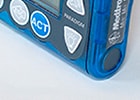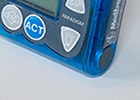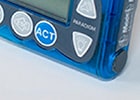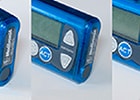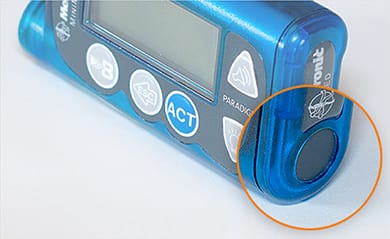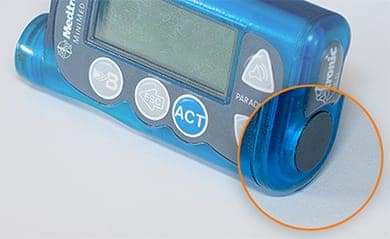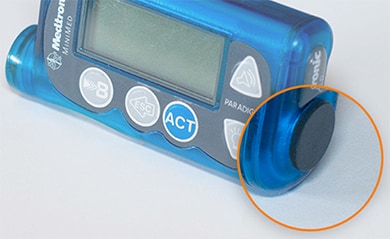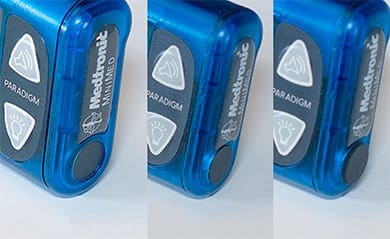Important medical device safety information
Loose Drive Support Cap and Potential for Water Damage
4/1/13
At Medtronic, we are committed to continuing to improve our products and services to enable people to manage diabetes. We recently sent a letter to notify U.S. Paradigm users and their healthcare professionals of two potential issues relating to Paradigm insulin pumps.
We are informing our customers of the potential for a loose drive support cap. In rare cases, the cap may stick out from the side of the insulin pump as a result of impact(s) with a hard surface. The letter also reminds our customers of the existing User Guide instructions that exposure to water can damage the insulin pump's internal electronics.
We are confident in the reliability of our Paradigm insulin pump platform and its ability to deliver safe and effective therapy for those who need it. Customer safety is our top priority. If you believe your insulin pump has a loose drive support cap, has damage as a result of exposure to water or observe any other possible insulin pump malfunction, please immediately discontinue the use of your insulin pump, and contact us at 1.888.204.7616, Option 1 and 2, for assistance with troubleshooting.
Frequently asked questions
Some customers have experienced a loose drive support cap, and in rare cases the cap may stick out from the side of the insulin pump as a result of impact with a hard surface. In most cases, the loose drive support cap will result in an A33 or Motor Error Alarm during the manual prime/fill tubing process.
While the risk to you is low, we’re asking you to examine the drive support cap on your insulin pump. To locate the drive support cap:
- Hold the insulin pump with the screen facing you (the reservoir opening should be on the bottom of the left side.)
- The drive support cap is the round circle on the right side of the pump below the raised Medtronic MiniMed bumper label. IMPORTANT: DO NOT PRESS ON THIS PORTION OF THE INSULIN PUMP.
- A normal insulin pump and an insulin pump with a loose drive support cap are shown in the pictures below.
- Look at the drive support cap:
- If drive support cap IS NOT indented: You must discontinue use of the insulin pump.You will need to manage your diabetes with insulin injections, per the back-up plan provided to you by your healthcare professional.
- If drive support cap IS indented: Your drive support cap has not been impacted and you can continue to use your insulin pump. Continue to monitor your insulin pump for signs of damage and contact us 24 hours a day at 1.888.204.7616 option 1 if you notice any changes in your drive support cap.
If needed, refer to the photo below, which also appears in the customer notification letter.
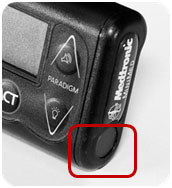
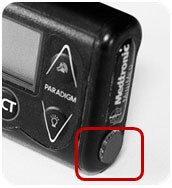
All Paradigm insulin pump models may be affected. You can find the insulin pump model in the status screen or the insulin pump label. This link can also help you find your pump model.
The model numbers of the pumps that may be affected by these issues are MMT-511, MMT-512, MMT-712, MMT-712E, MMT-515, MMT-715, MMT-522, MMT-522K, MMT-722, MMT-722K, MMT-523, MMT-523K, MMT-723, MMT-723K, MMT-554, and MMT-754.
To check for damage associated with loose drive support cap follow this process:
- Check that all connections are still tightly in place.
- If you notice that the drive support cap is loose, or sticking out, discontinue use of the pump. Do not press on the drive support cap. Pushing on the drive support cap may result in unintended insulin delivery, which can cause hypoglycemia.
- Check the LCD, keypad and pump case for cracks or damage.
- Check the infusion set, including the tubing connector and tubing cracks or damage.
- Review the status screen, basal rates, and other pump settings.
- Perform the Selftest procedure located in the UTILITIES MENU.
- If the selftest does not complete successfully, call our 24-Hour HelpLine for assistance.
Your insulin pump is designed to resist accidental contact with liquids which includes insulin as well as water. If your insulin pump has been exposed to insulin, follow the same steps you would if it was accidentally exposed to water:
- Pat the outside of the case until dry.
- Open the reservoir compartment and check the compartment and reservoir for water. If wet, dry it completely within 10 minutes of exposure to water. Exposure to liquids, including water or insulin can corrode the mechanism.
- Dry the reservoir completely—do NOT place a wet reservoir in the insulin pump.
- Do not use hot air to dry your insulin pump. This may damage your insulin pump's internal electronics.
- Check the battery compartment and the battery—if wet, let them dry completely before using the insulin pump.
- Perform a Self-test procedure located in the utilities menu.
